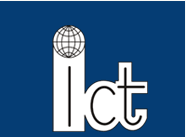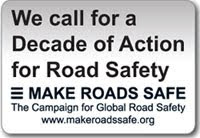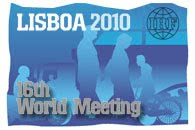The State government seems to be putting too much stress on awareness campaigns, particularly slogans. But international experts feel that such isolated campaigns on road safety have negligible impact on the driving behaviour.
Studies show that the drivers are generally aware that bad driving behaviour like overspeeding is responsible for road accidents, but continue to do so until punitive action is taken. For example, a study by the National Institute of Mental Health and Neuro Sciences (NIMHANS) found that 99 per cent of the drivers who drink and drive agree that it (drinking and driving) is dangerous and 97 per cent were aware that it is prohibited under laws. This means that the government is spending most of its efforts and money to teach the drivers something they already know.
According to Global Road Safety Partnership (GRSP), road safety awareness campaigns in India are ineffective because they are not built on a scientific basis. Unless the campaigns serve as a prelude to well-coordinated punitive actions for bad driving behaviour, the slogans won’t be worth the papers they are written on. The fact that road accidents have increased despite repeated awareness campaigns, should make the government re-examine its strategies.
Drunken driving
With alcohol consumption catching up as part of popular culture, drunken driving is the single largest reason for road accidents. According to a WHO study, drunken driving is the cause for 44-67 per cent of fatal accidents. The State government’s data says 94-98 per cent of the road accidents are due to driver’s fault, for which drunken driving is a major contributor.
While experience of several countries shows that punitive action alone can deter drunken driving, the number of persons booked by the police in the State on this count is quite low. The Criminal Investigation Department review (2007) says: “Action has been initiated against only 6,557 persons for drunk and driving. Very easily 5 to 6 cases can be booked in each district. That means
booking of 2,000 cases per district is not difficult. With 36 units around 72,000 should be the target against drink driving.”
The situation has not changed much since the number of driving licences cancelled or suspended last year is just around 6,000.
“It is an open secret that every day, hundreds of thousands of men all over the State, park their vehicles in front of liquor bars for indulging in drinking. All of them drive away in these vehicles after drinking in the bars, but the police are merely looking from the sidelines,” says activist A Narayanan.
For some mysterious reason, the police believe that those coming to TASMAC shops in vehicles just buy liquor and go, he says, referring to an reply he received for an RTI application.
Road designing
The government has always believed that building better roads would bring down road accidents. But police records say that around 65-70 per cent of road accidents takes place on national and State highways, which are comparatively ‘better roads’.
Apparently, better roads do not automatically translate into safer roads. For example, the East Coast Road (ECR), which is well maintained, also sees one of largest number of accidents in the city.
Highlighting that newly improved roads need not necessarily be safe, R P Indoria, secretary general, Indian Road Congress, says poor designing of entry and exit points, medians, pedestrian pathways and crossing cause accidents on highways.
Agreeing that road accidents are increasing and urgent measures are required to address it, Transport Commissioner S Machendranathan says motorists have the tendency of overspeeding on better roads, which result in accidents. His department has suggested the installation of ‘speed governors’ to limit the speed of heavy vehicles. It was also in talks with the lorry owners’ associations to avoid long hours at the wheel for drivers.
Machendranathan stresses that roads should be better designed to make it safe. “Even the newly built OMR corridor has defects at 36 points, which can lead to accidents.”
Cine artists do their bit for road safety
Actors S Ve Sheker and Vaiyapuri distributed pamphlets containing messages on road safety to the general public and Metropolitan Transport Corporation drivers at Saidapet bus terminus on Tuesday.
According to K V Karthalingan, RTO (West), the programme was organised as part of the weeklong 21st annual road safety week celebrations conducted till January 7th. The pamphlets emphasise that drivers should not use cell phones while driving, wearing seat belts in case of a four-wheeler and using helmets both by riders and pillion riders.
The office of the Regional Transport Officer, Chennai (West), released the statistics on road accidents in Tamil Nadu during the last two years.
Source-http://www.expressbuzz.com/edition/story.aspx?Title=Awareness+slogans:+Are+they+meaningless?&artid=9sdVWjkj150=&SectionID=lifojHIWDUU=&MainSectionID=lifojHIWDUU=&SEO=&SectionName=rSY|6QYp3kQ=
Read more...























